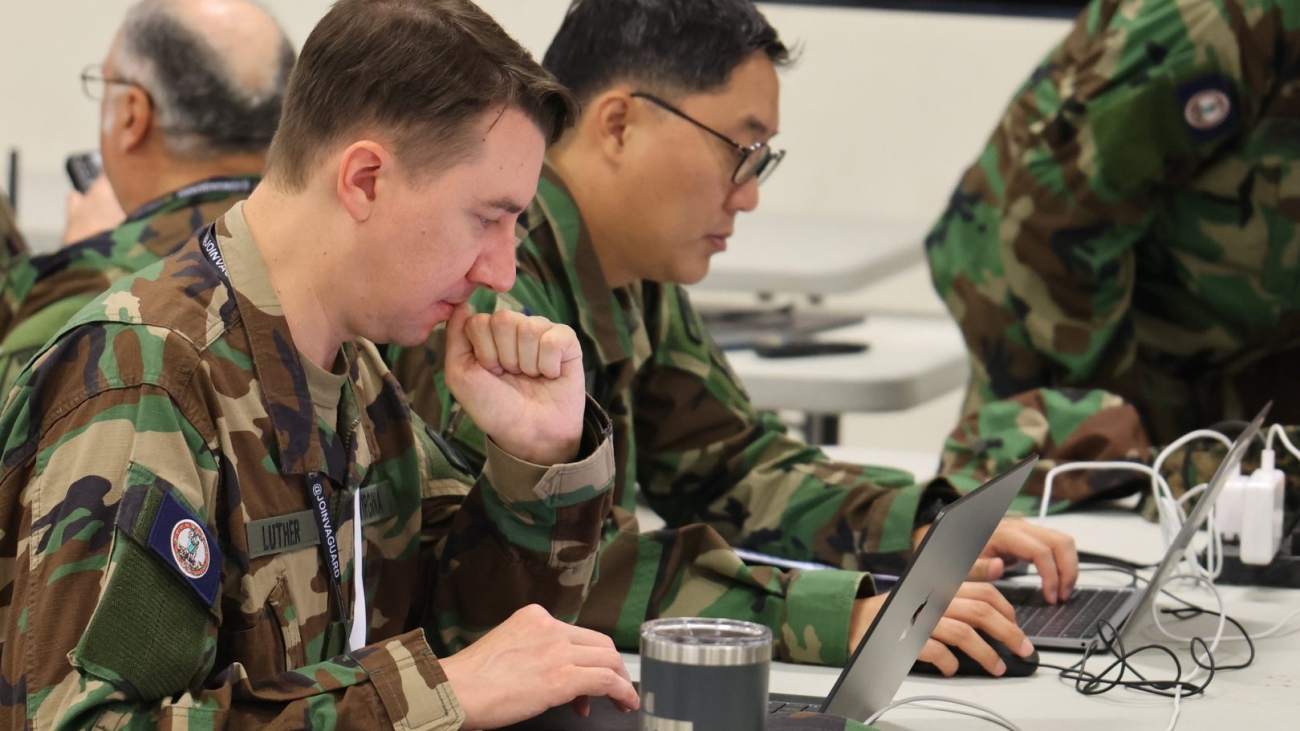Back in August, we reported on Cyber Fortress 25, the major multiagency cyber defense exercise that brought together the Virginia Defense Force, the Virginia National Guard, the U.S. Marine Corps, and NATO partners to defend against simulated cyberattacks on critical infrastructure. But there’s more to the story. As new details emerge, it’s clear that the Virginia Defense Force played a far greater role than previously understood—one that highlights its growing significance in Virginia’s digital defense network and its vital partnership with the National Guard and other agencies.
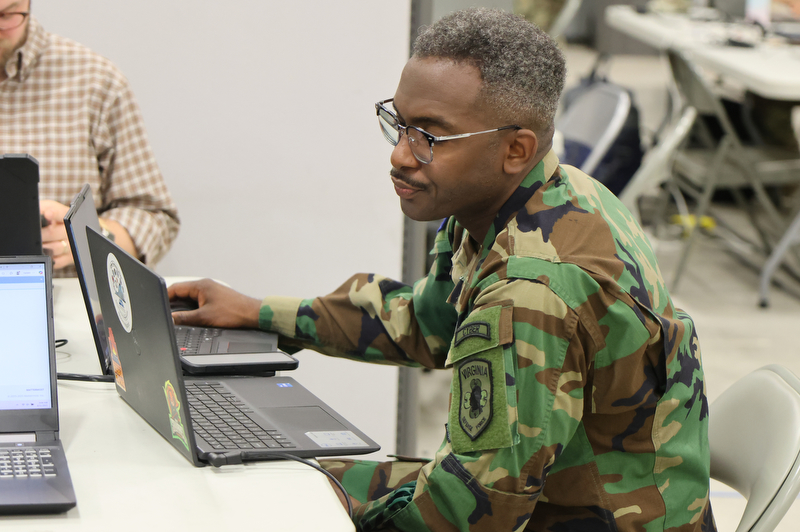
The Virginia Defense Force once again demonstrated its growing capability and importance in defending the Commonwealth’s digital infrastructure during this year’s Cyber Fortress 25 exercise held August 2–17, 2025, at the State Military Reservation in Virginia Beach. The event brought together the Virginia National Guards 91st Cyber Brigade, The U.S. Marine Corps, multiple federal agencies, as well as NATO allies, to simulate a complex cyberattack on an electric cooperative to test the state’s cyber response plan. Members of the Virginia Defense Force’s 31st Cyber Battalion, 1st Regiment, played a key role in these joint operations, showcasing the skills and expertise that have made them an indispensable part of Virginia’s cyber defense network.
The exercise included both training and “force-on-force” scenarios designed to strengthen interagency coordination and evaluate the resilience of Virginia’s cyber infrastructure. During the first week, VDF personnel received advanced instruction in operational technology cybersecurity, cyber threat intelligence, and forensic analysis—essential skills for protecting critical systems such as Industrial Control Systems and Supervisory Control and Data Acquisition networks. In the second week, VDF operators joined an electric cooperative as part of a “Blue Team,” defending a simulated network from aggressive “Red Team” attacks modeled on real-world adversaries. This two-week training not only improved individual readiness but also reinforced the teamwork between the VDF and the Virginia Army National Guard’s 91st Cyber Brigade.
Colonel Gerald Mazur, commander of the Army National Guard’s 91st Cyber Brigade, praised the VDF’s contributions, emphasizing that the 31st Cyber Battalion—the Virginia Defense Force’s dedicated cyber unit—continues to expand the Commonwealth’s cyber defense capacity. The 31st Cyber Battalion is a specialized element within the Virginia Defense Force that assists and augments the 91st Cyber Brigade in nearly all of its missions, making it one of the leading State Defense Force cyber units in the nation. The battalion’s participation strengthened Virginia’s total force by leveraging the civilian-acquired expertise of its members, many of whom work in IT and cybersecurity roles outside their military duties. Exercise director Colonel David Garner also highlighted the unique value of the VDF, noting their ability to assess vulnerabilities, analyze complex attacks, and provide actionable recommendations for securing municipal and state networks.
Lt. Colonel (Va.) John Congson, commander of the 31st Cyber Battalion, underscored that the training objectives focused on integrating with partner agencies, supporting the energy sector, and honing cyber tradecraft. For the first time, the battalion also worked alongside U.S. Marine Corps cyber operators, expanding the VDF’s interservice collaboration. Sergeant First Class Nick Kuriger of the 31st Cyber Battalion described how VDF cyber experts helped shape the exercise’s realism by creating attack scenarios based on actual threat actor behavior. They also conducted malware analysis training, provided technical support, and used artificial intelligence to generate intelligence reports—mirroring the processes they would employ during a real-world cyber emergency.
As the VDF’s cyber mission continues to mature, its leadership has recognized the expanding scope and importance of this work. Brigadier General (Va.) Rich Diddams, commander of the Virginia Defense Force, highlighted that their cyber operations form a first line of defense against threats capable of disrupting vital services or compromising sensitive data. He emphasized that the mission goes beyond technology—it’s about protecting the lives and livelihoods of Virginians. The camaraderie and innovation among the cyber battalion reflect the force’s motto, “Paratus et Fidelis”—Prepared and Faithful.
Through exercises like Cyber Fortress 25, the Virginia Defense Force continues to prove that it is not only prepared to meet the challenges of the digital age but also a cornerstone in ensuring Virginia’s safety, resilience, and technological leadership. Each byte of data defended, each vulnerability mitigated, and each collaborative success strengthens the Commonwealth’s posture against the growing tide of cyber threats.
Also during Cyber Fortress 25, Brigadier General (Va.) Richard Diddams, commander of the Virginia Defense Force, had the honor of promoting a retired U.S. Marine Corps officer in a special ceremony that underscored the enduring bonds of respect and camaraderie between the nation’s military branches.
More Photos from the mission:
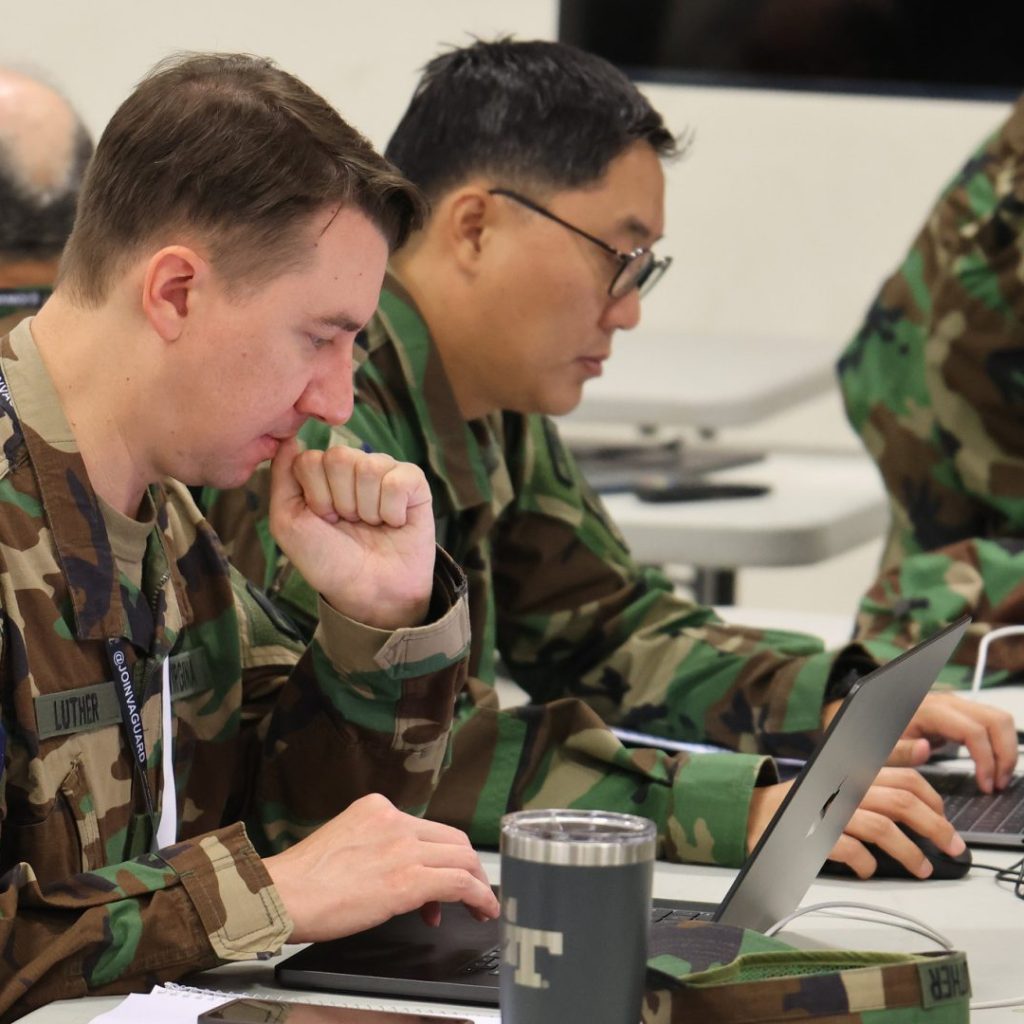
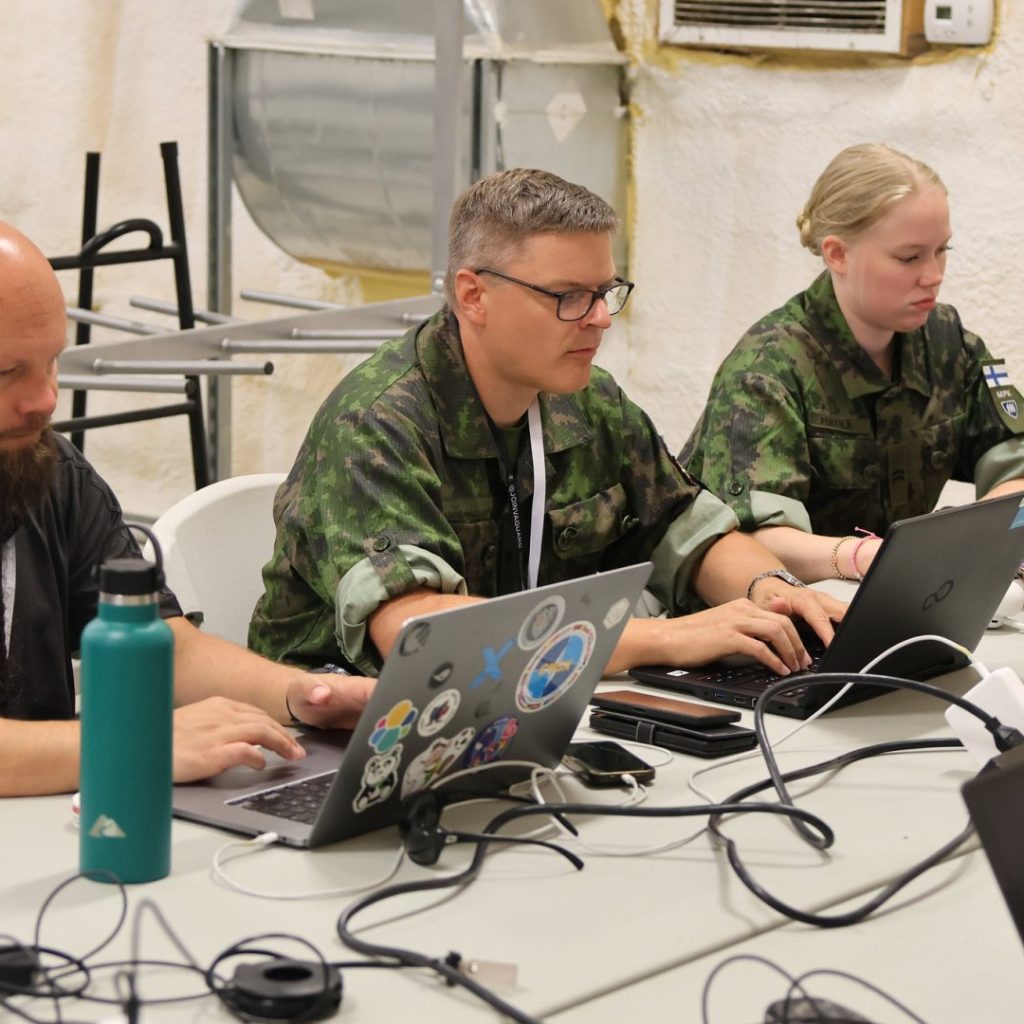
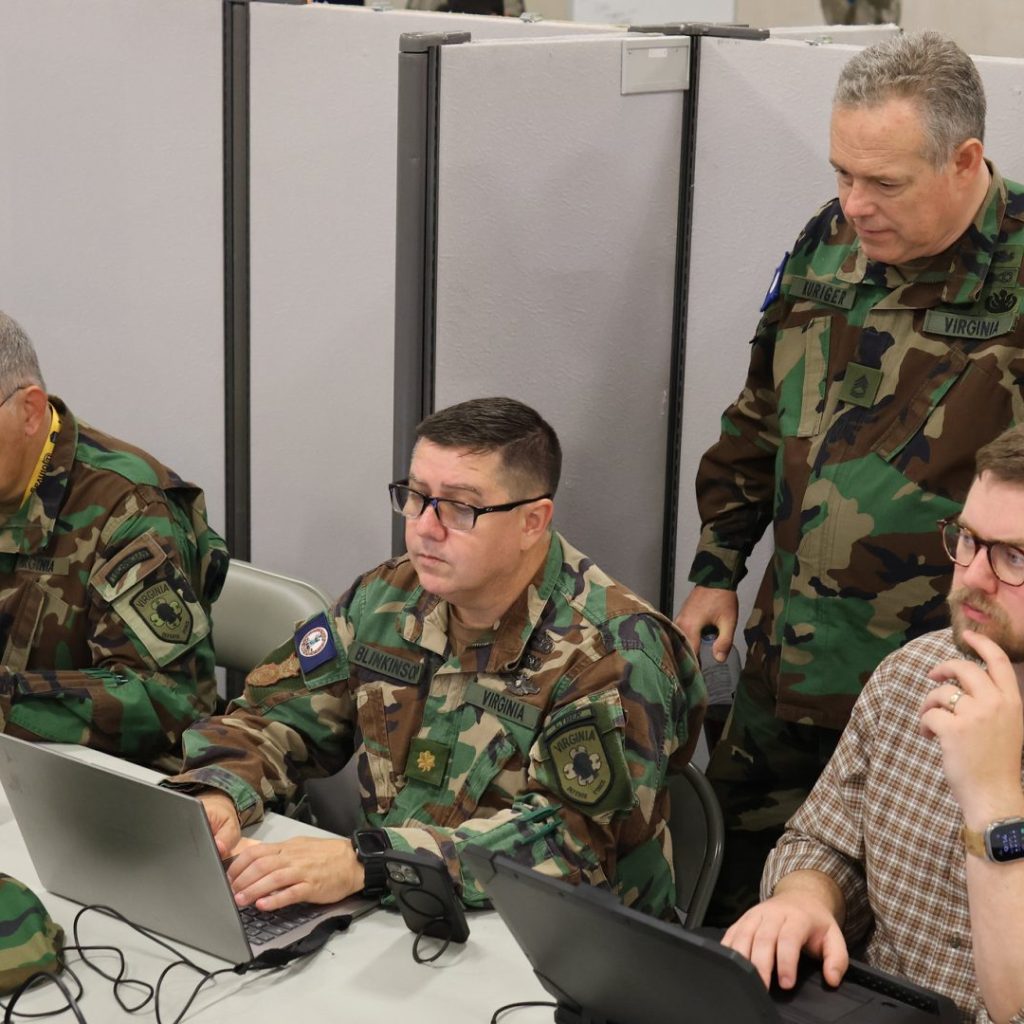
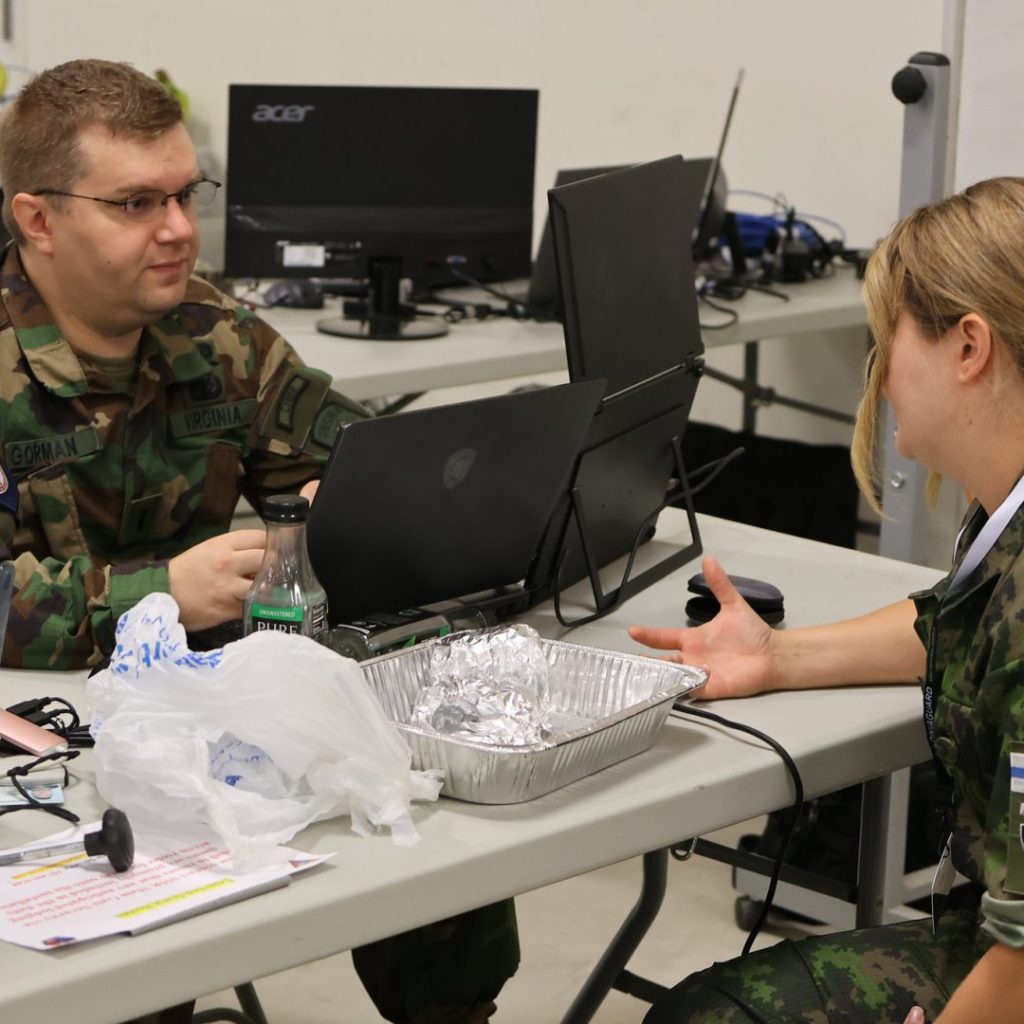
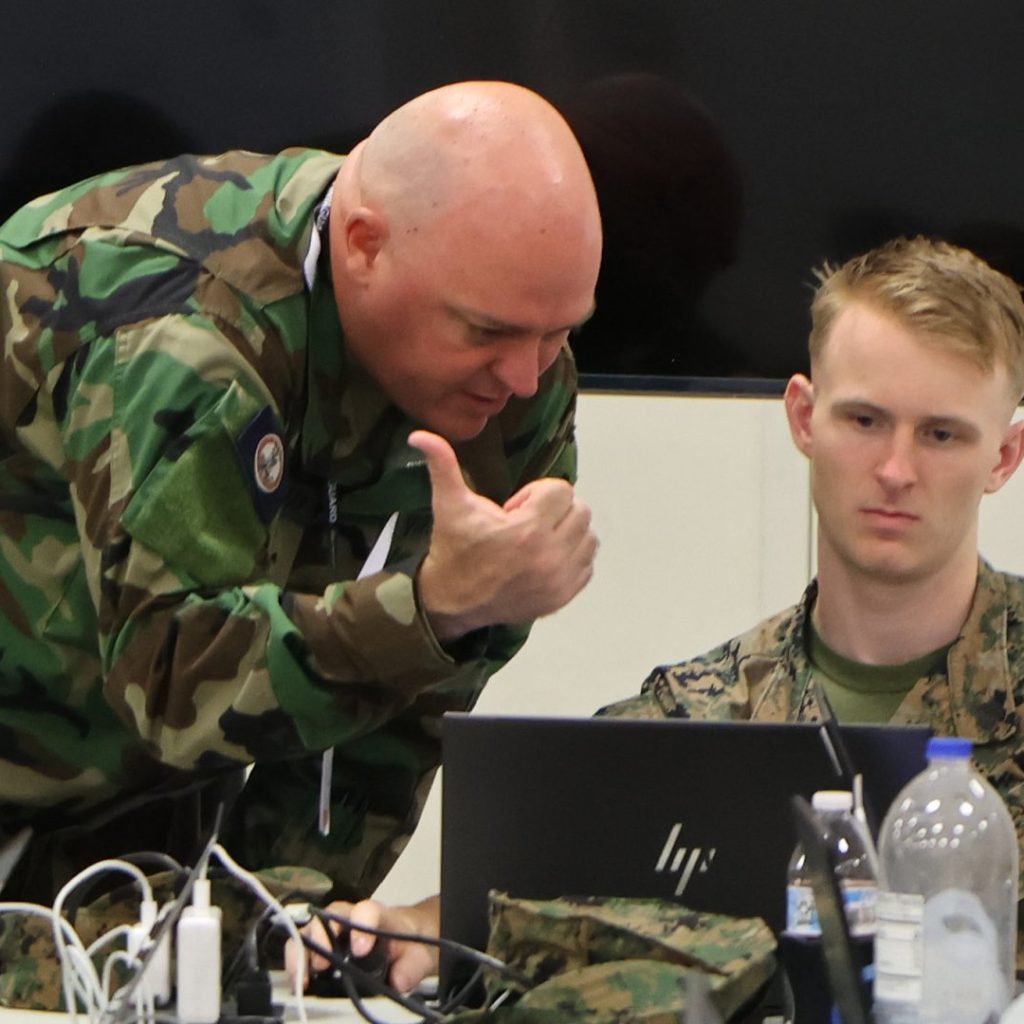
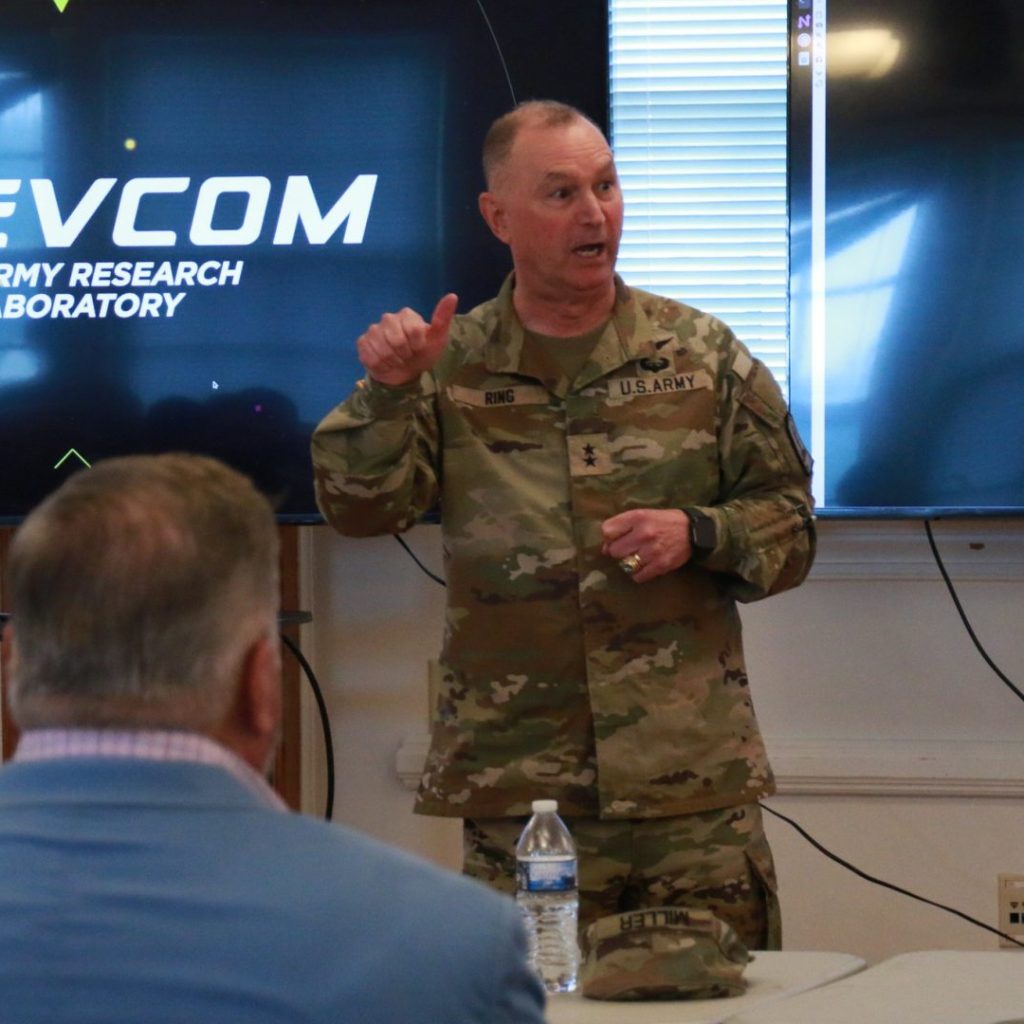
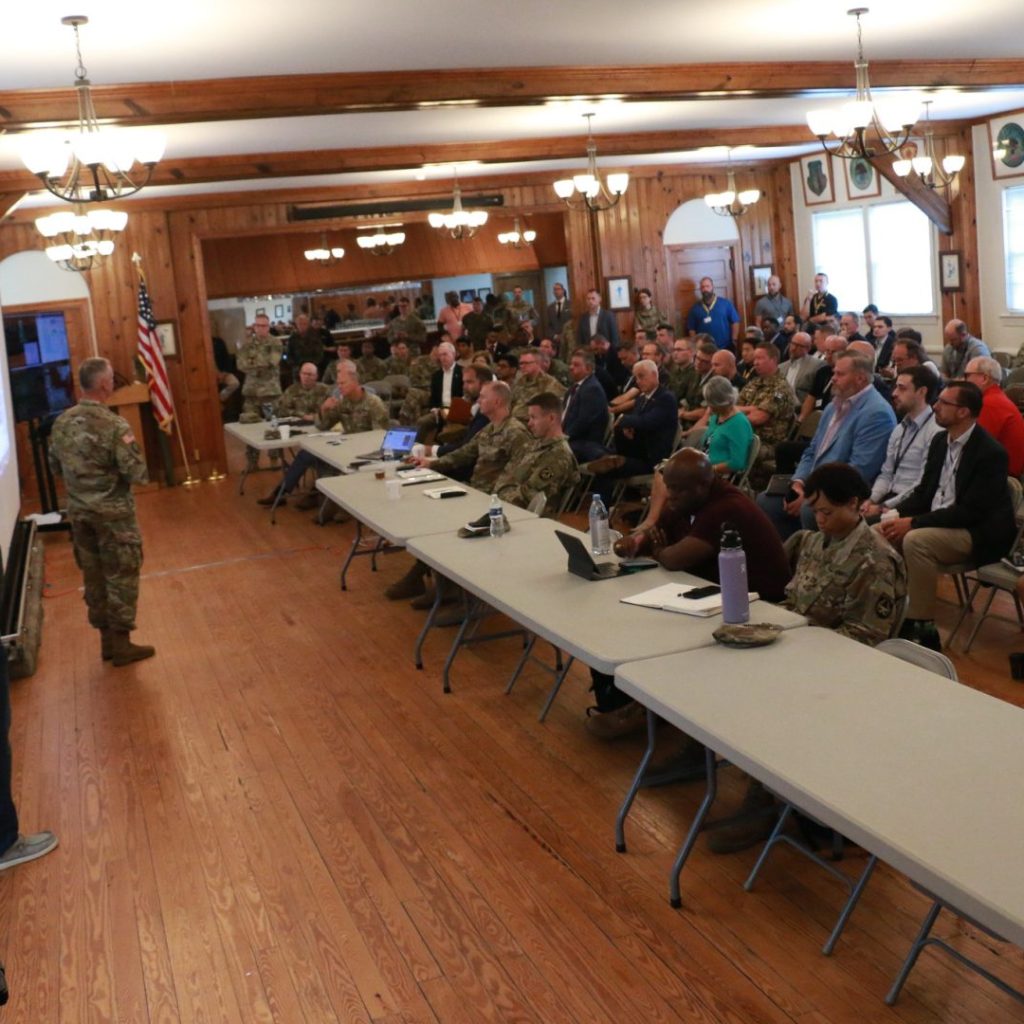
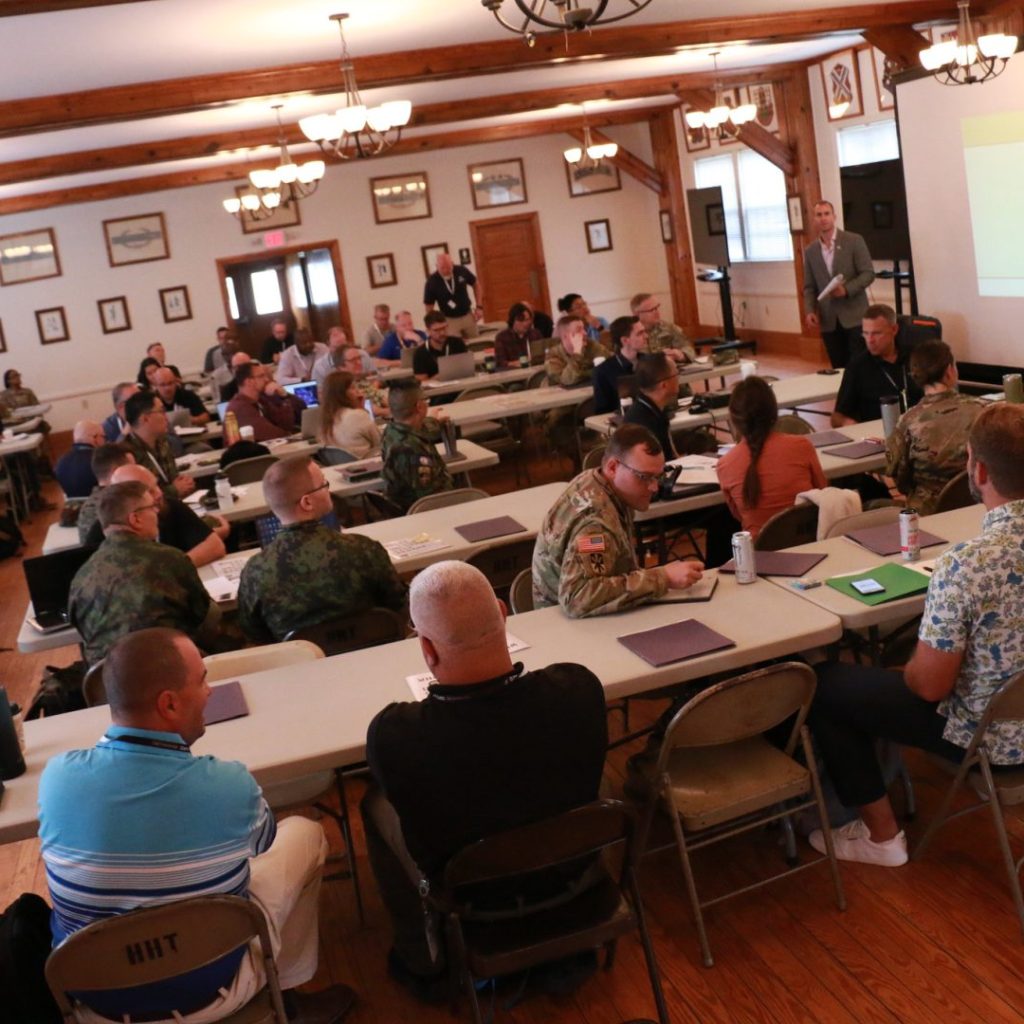
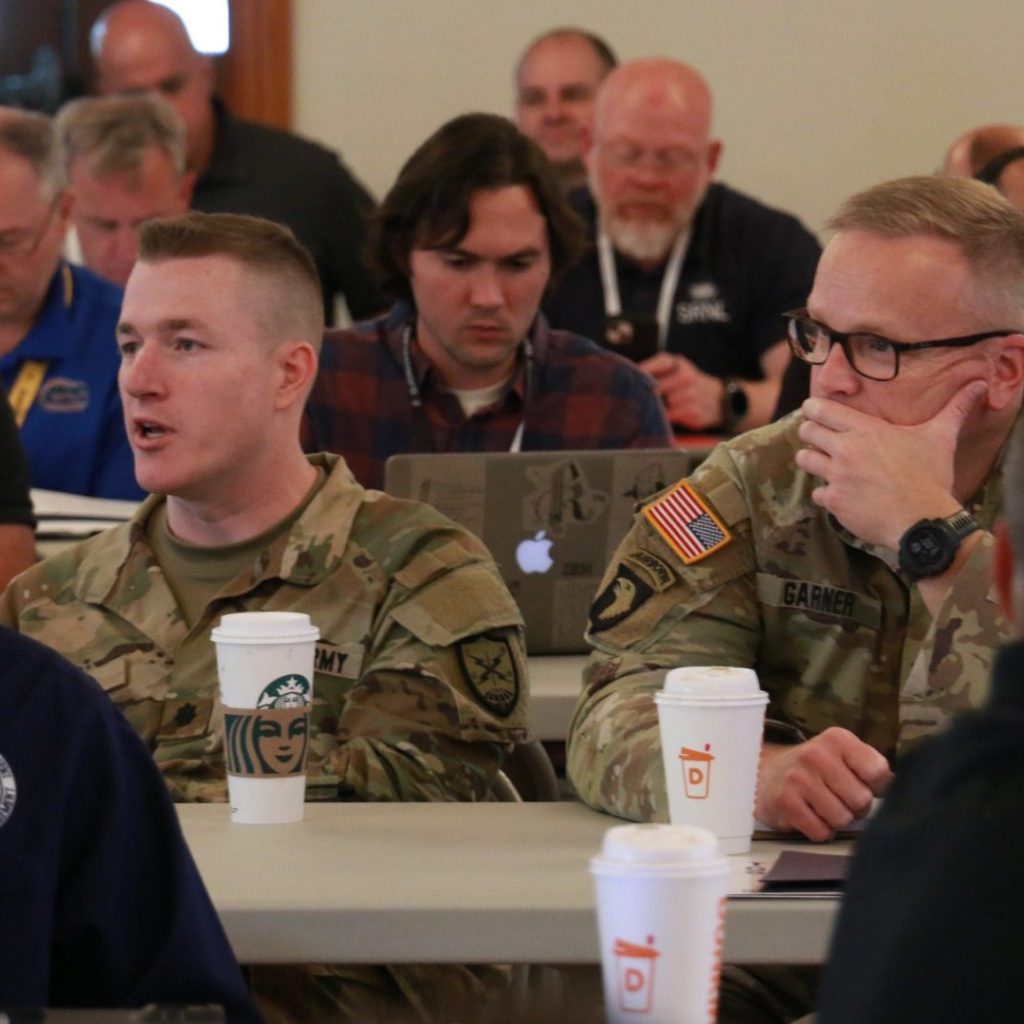
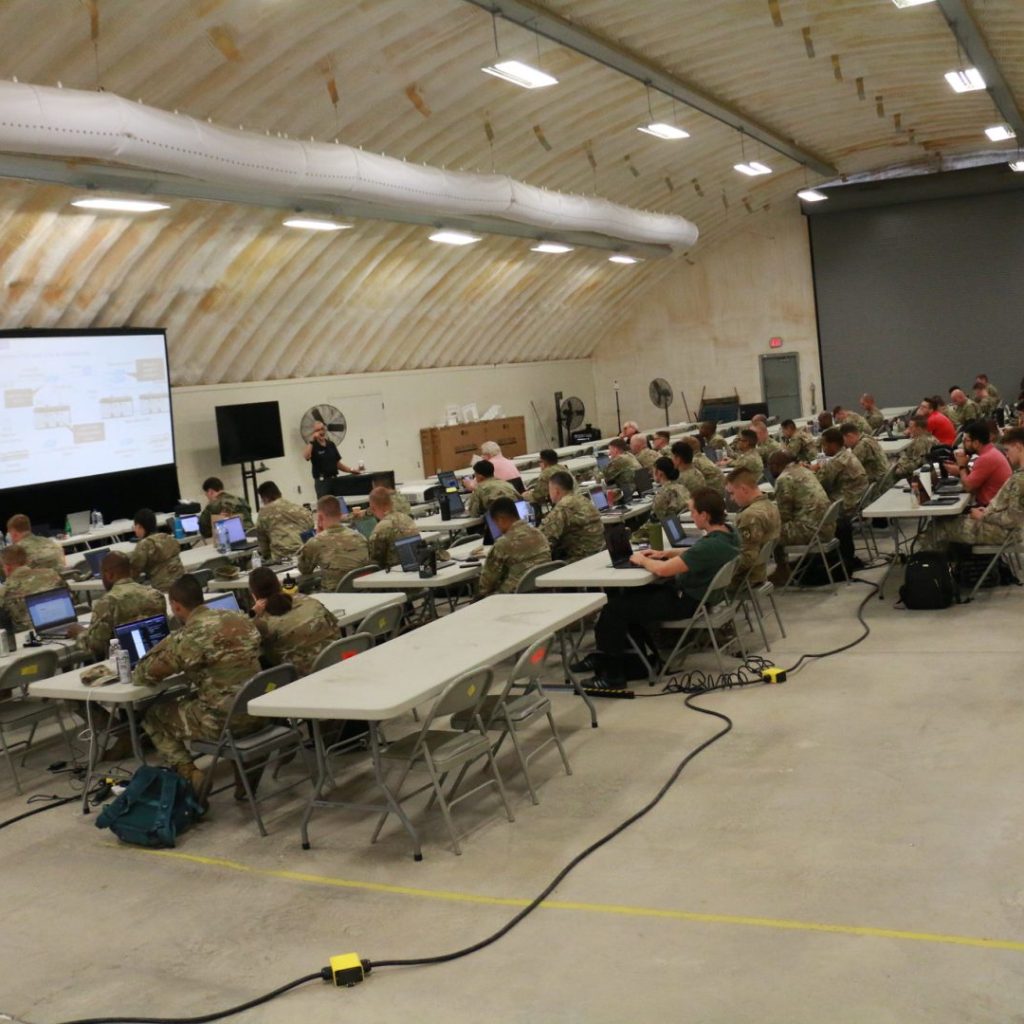
Brig.Gen. (Va.) Richard Diddams, commander of the Virginia Defense Force and retired U.S. Marine Corps officer, promotes a United States Marine during Cyber Fortress 25 Aug. 7, 2025, at the State Military Reservation in Virginia Beach, Virginia. Cyber Fortress 25 runs from Aug. 2-16, 2025, and brings together state and federal organizations who will respond to a real-world cyber incident. The focus of Cyber Fortress 25 is electric cooperatives and the exercise provides an opportunity to test Virginia’s cyber response plan and better prepare for future collective responses. In addition, representatives from several foreign militaries are participating in the exercise, including a number from Finland, Virginia’s State Partnership Program’s partner. The exercise is hosted by the 91st Cyber Brigade and includes a re-certification of two cyber protection teams and one battalion headquarters s as part of their federal mission. (U.S. National Guard Photo by A.J. Coyne)
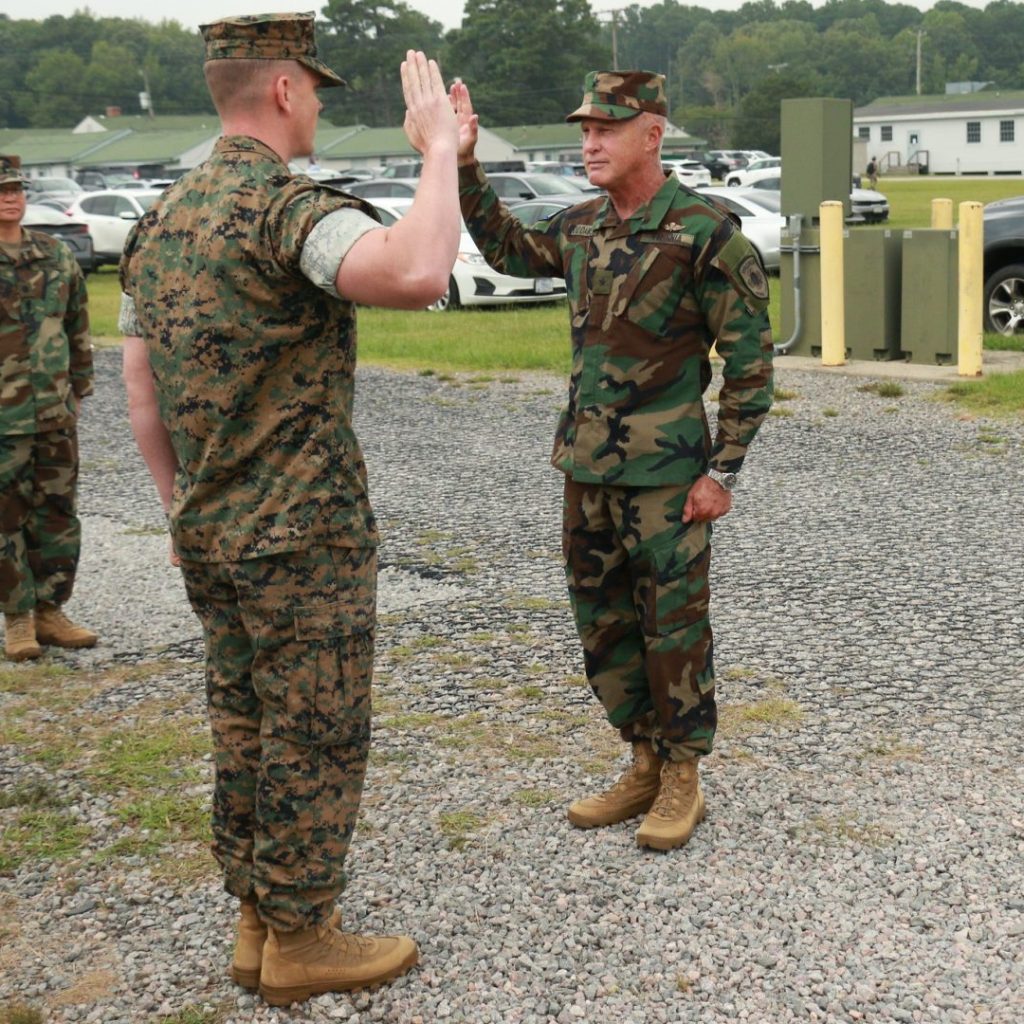
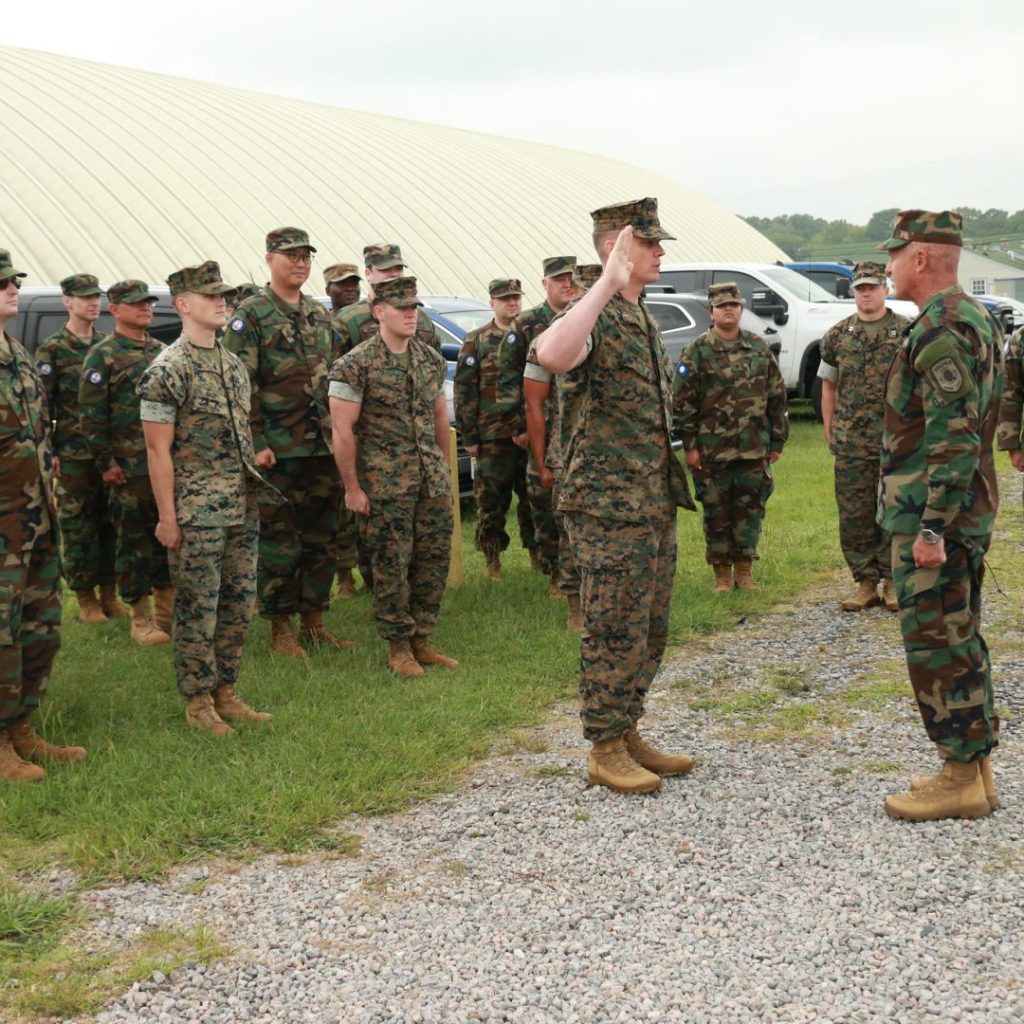
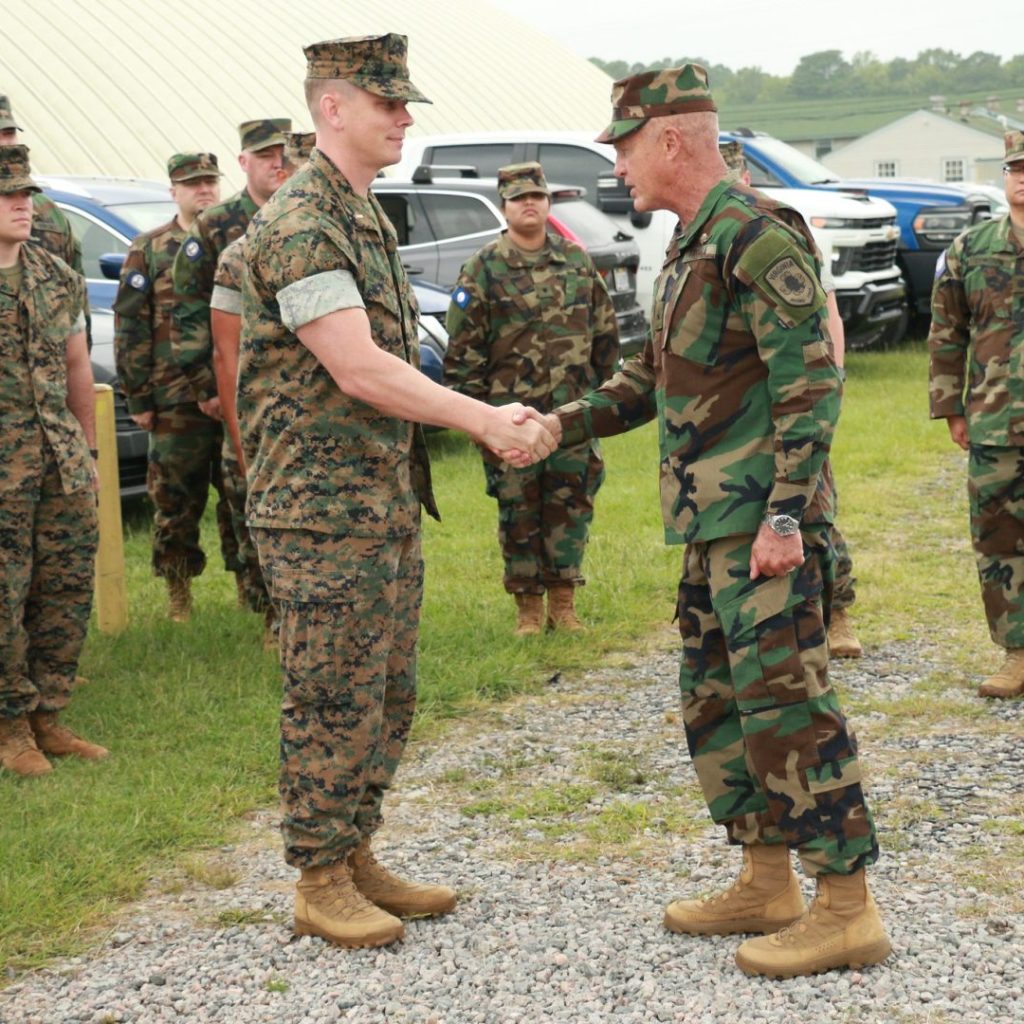
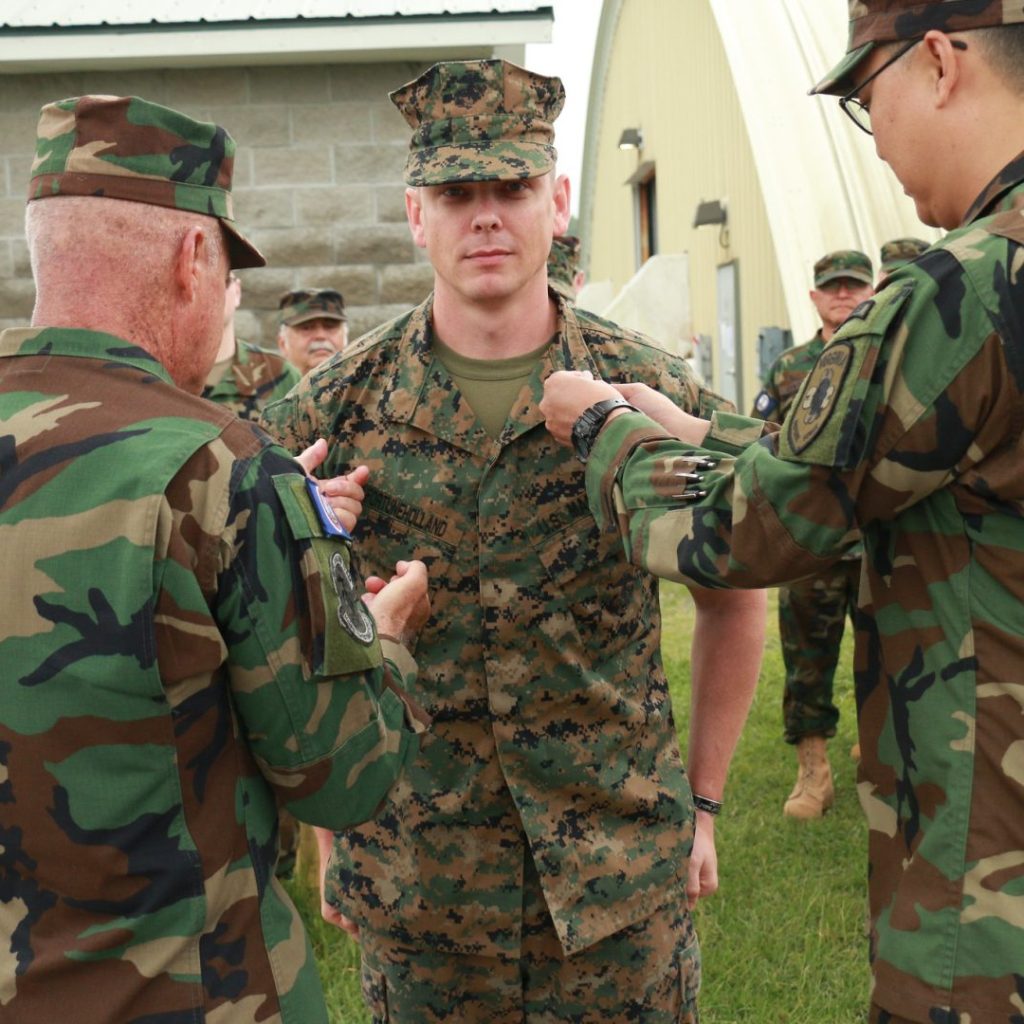
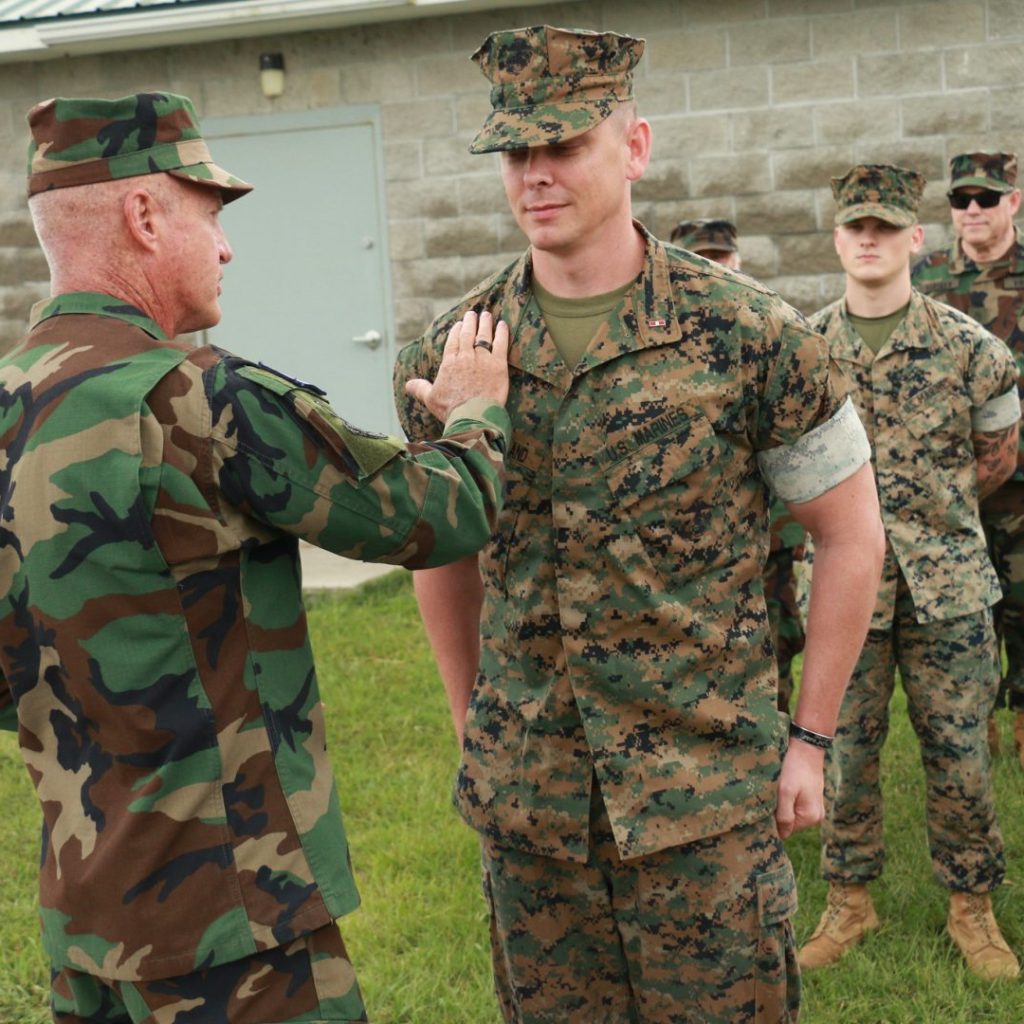
VDF cyber operators join multiagency Cyber Fortress 25 response exercise
15/September/25 – Lt. Col. (Va.) A. A. Puryear
VIRGINIA BEACH, Va. – Virginia Defense Force personnel assigned to the 31st Cyber Battalion, 1st Regiment joined National Guard Soldiers and Airmen as they partnered with military and civilian cyber operators Aug. 2-17, 2025, at the State Military Reservation in Virginia Beach, Virginia, during Cyber Fortress 25. They conducted training and were part of the enclaves in a “force-on-force” scenario to simulate the process they would follow to respond to and mitigate a cyber attack on an electricity cooperative.
The joint, interagency, intergovernmental multinational exercise focused on electric cooperatives and provided an opportunity to test Virginia’s cyber response plan, better prepare for future collective responses and build resiliency, explained Col. David Garner, the Information Operations Support Center commander and exercise director. The Fort Belvoir-based 91st Cyber Brigade and IOSC hosted the exercise.
“The VDF’s 31st Cyber Battalion continues to build cybersecurity capability and capacity supporting the Commonwealth of Virginia’s cyber defense posture,” said Col. Gerald A. Mazur, commander of the 91st. “During the first week of Cyber Fortress, members of the VDF received operational technology cybersecurity, cyber threat intelligence and forensics training. In week two, the VDF partnered with an electric cooperative, participated in a force-on-force exercise as a “Blue Team” defending an electric cooperative representative network from simulated cyber attacks based on real world events.”
Garner echoes Mazur’s assessment of VDF support to Cyber Fortress.
“The VDF is a valued partner,” Garner said. ‘Many of the VDF 31st Cyber Battalion work in the information technology and cyber security sectors in their civilian capacity, which provides them with the skillsets needed to understand network operations, what makes networks vulnerable to cyber exploit and provide recommendations for ways to harden municipal networks. During Cyber Fortress their enclave did well in analyzing the details and scope of the cyber-attack.”
Garner said the value of having the VDF attend Cyber Fortress is providing a great environment for them to get the training and experience they need to assist in a responding to a cyber attack on the commonwealth.
“Just like in other situations where the they are called, the VDF’s cyber professionals increase the capacity of the commonwealth’s total force,” Garner said.
Read more about Cyber Fortress 25 at https://vngpao.info/2p8wf87b.
The key training objectives for the VDF was integration with the other services, interagency coordination, support to the commonwealth’s electric energy sector and training courses in cyber tradecraft, explained Lt. Col. (Va.) John J. Congson, commander of the 31st Cyber Battalion.
“The 31st Cyber Battalion routinely partners with the Virginia Army National Guard 91st Cyber Brigade in defense of the commonwealth,” Congson said “We continued this effort in this exercise both as a participant and helping manage the exercise for a successful event for all participants. We also worked with the U.S. Marine Corps for the first time as they were part of our enclave for the live network defensive.”
The training provided to the Virginia Army National Guard and the VDF postures both organizations for the upcoming challenges in cyberspace, Congson said.
“We closely align with the Virginia Army National Guard for our tasking,” Congson said. “As their tasking expands, we can expect the VDF to also grow in the same direction.”
Members of the VDF assisted with exercise planning and execution where they put their extensive civilian-acquire experience to work, explained Sgt. 1st Class Nick Kuriger, operations noncommissioned officer in the 31st Cyber Battalion.
During the planning process, VDF cyber experts helped create exercise scenarios and helped shape the framework describing how real-world adversaries might behave during a cyber attack to improve the realism of the exercise, Kuriger said.
VDF personnel demonstrated proficiency in teaching cyber security and were asked to facilitate an overview course dealing with malware analysis, assisted 91st Cyber Brigade personnel provide technical support where the fielded support request and exercise communications and used range intelligence and generative AI to create intelligence reports sent to the exercise fusion center mirroring what they would need in real world responses, Kuriger said.
“VDF members greatly benefited by specific training during the first week,” Kuriger said. “The exercises in the second week gave the VDF incident leaders an opportunity to test incident response management tools and employ both tactical and strategic deployment of VDF incident response capabilities. They directed the team to find and respond to indicators of compromise, and this gave the incident leaders a better understanding of the knowledge, skills and abilities VDF personnel bring to the fight and areas needed for improvement.”
Brig. Gen. (Va.) Rich Diddams, commander of the VDF, stress the importance of the VDF cyber mission in his quarterly update.
“The value of our cybersecurity mission lies in its direct impact on the safety and security of Virginia’s citizens,” Diddams said. “Our support provides the first line of defense against cyber threats that could disrupt essential services, compromise personal data, or undermine public trust. Whether we’re securing communication networks for emergency response, collaborating with state agencies to fortify infrastructure or training to counter sophisticated cyberattacks, our work ensures that Virginia remains a safe and thriving place to live, work and serve.”
Read the full message at https://vdfpio.info/yzmammxk.
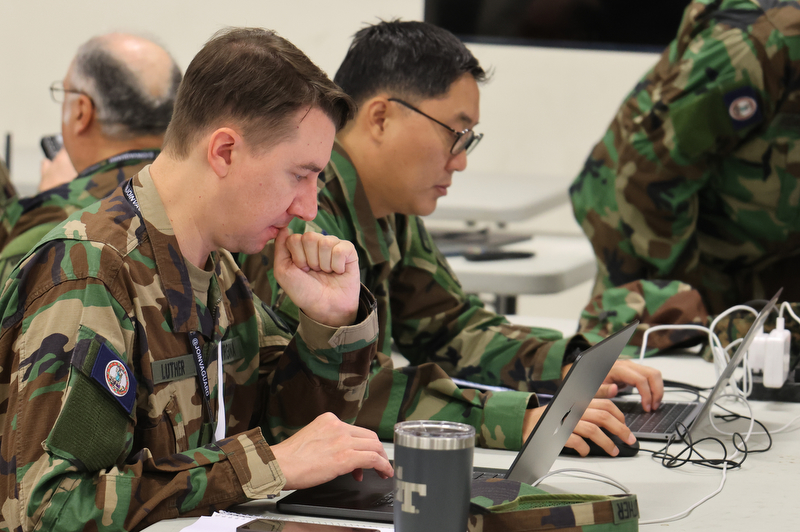
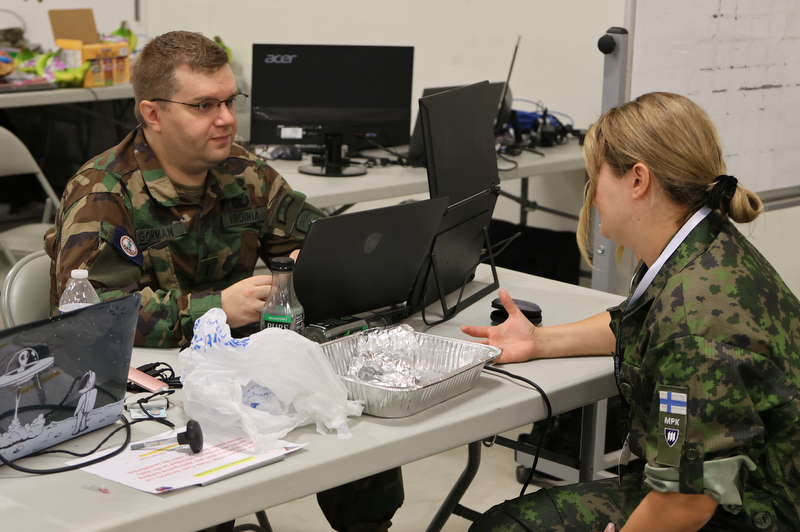

Commander’s Summer 2025 Update: Cyber mission directly impacts safety, security of fellow Virginians
15/September/25 – Brig. Gen. (Va.) Richard Diddams
To the Virginia Defense Force:
As a proud member of the Virginia Defense Force, I am compelled to share the profound value and deep sense of fulfillment our cybersecurity team and its mission brings to our organization and the Commonwealth of Virginia. In an era where digital threats evolve at an unprecedented pace, our role in safeguarding critical infrastructure, protecting sensitive information, and ensuring the resilience of our state’s digital landscape has never been more vital or more rewarding.
The value of our cybersecurity mission lies in its direct impact on the safety and security of Virginia’s citizens. Our support provides the first line of defense against cyber threats that could disrupt essential services, compromise personal data, or undermine public trust. Whether we’re securing communication networks for emergency response, collaborating with state agencies to fortify infrastructure or training to counter sophisticated cyberattacks, our work ensures that Virginia remains a safe and thriving place to live, work and serve.
This mission is not just about technology. it’s about protecting the livelihoods and well-being of our fellow Virginians. Beyond its tangible impact, the joy of our cybersecurity mission stems from the camaraderie, innovation and sense of purpose it fosters. There is an undeniable thrill in tackling complex challenges, from decoding vulnerabilities to outsmarting potential adversaries in the digital realm. Each training exercise, each collaborative effort with our peers and each successful defense strengthens not only our skills but also our bonds as a team. We are problem-solvers, innovators and guardians, united by a shared commitment to excellence and service.
The satisfaction of knowing our efforts make a real difference, often behind the scenes, is a reward unlike any other. Moreover, our cybersecurity mission offers endless opportunities for growth and learning. The ever-changing nature of cyber threats keeps us sharp, pushing us to stay ahead of the curve through continuous training and adaptation. For many of us, this intellectual challenge is a source of excitement, as we master new tools, explore emerging technologies and contribute to the broader mission of national security. It’s a chance to grow as individuals while serving a cause greater than ourselves.
In the Virginia Defense Force, our cybersecurity efforts are a testament to the motto, “Paratus et Fidelis” or Prepared and Faithful. We are prepared to meet the challenges of a digital age and faithful to our duty to protect the commonwealth. Let us continue to embrace this mission with passion and pride, knowing that our work not only defends Virginia today but also builds a more secure future for generations to come.
Thank you for your dedication to this critical mission. Together, we are making a difference: one byte, one defense one victory at a time.
I remain Semper Fidelis,
Brig. Gen. (Va) Rich Diddams
Commander, Virginia Defense Force
Cyber operators train for response, mitigation at Cyber Fortress 25
By Cotton Puryear | Virginia National Guard Public Affairs
VIRGINIA BEACH, Va. – National Guard Soldiers and Airmen and members of the Virginia Defense Force partnered with military and civilian cyber operators Aug. 2-17, 2025, at the State Military Reservation in Virginia Beach, Virginia, during Cyber Fortress 25. They conducted training, a senior leader table top exercise and established enclaves in a “force-on-force” scenario to simulate the process they would follow to respond to and mitigate a cyber attack on an electricity cooperative.
The joint, interagency, intergovernmental multinational exercise focused on electric cooperatives and provided an opportunity to test Virginia’s cyber response plan, better prepare for future collective responses and build resiliency, explained Col. David Garner, the Information Operations Support Center commander and exercise director. In addition, representatives from several foreign militaries participated in the exercise, including a number from Finland, Virginia National Guard’s State Partnership Program’s partner
The Fort Belvoir-based 91st Cyber Brigade and IOSC hosted the exercise which included a re-certification of two cyber protection teams and one battalion headquarters as part of their federal mission.
“The annual Cyber Fortress exercise is critical training event used to test the Commonwealth’s ability to respond to a cyber attack,” Garner said. “The relationships and trust built at Cyber Fortress will be put to the test in a real-world event and helps refine the commonwealth’s cyber critical incident response plans and provides an environment where we are continuously improving processes and readiness. The Virginia National Guard will be ready if called upon.”
Garner said the first week of Cyber Fortress was designed to deliver high quality training in the areas of cyber defense of operational technology, the technology used to interact with the physical devices such as an Industrial Control System Supervisory Control and Data Acquisition system. The Soldiers and civilian partners also received training in cyber threat intelligence, malware analysis, and electrical systems.
“This training was attended by a mixed audience of military, federal government, state government, students and members of the electric co-ops,” Garner.
Other key events from the first week were the capabilities briefs, a tabletop exercise and a Distinguished Visitors Day.
The Virginia Department of Emergency Management, the Virginia Army National Guard, the United States Army Reserve and the Cybersecurity and Infrastructure Security Agency were among the many agencies delivering briefs on their agency’s mission and the capabilities they would bring in response to a cyber attack
VDEM led the tabletop exercise and took all of the participants through a scenario where multiple electric co-ops were undergoing coordinated and complex multi-domain cyber and unmanned aerial system attacks.
“Although that scenario was highly unlikely to actually occur, the scenario did foster cross talk among all of the audience to work out how we would respond if something like this were to happen,” Garner said.
The Distinguished Visitors Day audience included executive level leaders from VDEM, CISA, Army Research Labs, DEVCOM, Army Futures Command, foreign military partners including Finland, Sweden, Latvia, the electric co-operatives and the leadership of the Virginia National Guard.
‘DV Day was designed to create an environment where these executives receive briefs, see the technology and talk to the service members about the exercise,” Garner said. “One of the most important aspects of DV Day was the ability to network with other agencies and build relationships that can be called upon if an emergency event happens in the commonwealth.”
The second week of Cyber Fortress 25 was the force-on-force cyber exercise designed to simulate and test cyber incident response to a cyber attack on an electric co-op.
The exercise’s “Red Team” acted as the opposing force and employed tactics, techniques and procedures used by a well-known nation-state sponsored advanced persistent threat actor that targets critical infrastructure.
The “Blue Teams” were broken into eight enclaves charged with the mission of defending a virtual network designed to represent what a typical electric co-op’s information technology network and operational technology network would look like.
The “White Cell” designed the exercise scenario, built the virtual network cyber range, provided exercise control and acted as the higher headquarters.
At the end of the day the Red and Blue Teams would get together to conduct a “Purple Team” after action review where they would discuss the day’s activities.
At the end of the exercise, a final Purple Team brief was conducted where the attackers outlined everything they did in the environment, and the defenders saw if they were successful in their hunt, clear, harden and assess techniques.
Photos:
Military, civilian cyber operators train for response, mitigation at Cyber Fortress 25
~ Photos on Flickr at https://vngpao.info/y4h9f8tn
Cyber Fortress 25 DV Day showcases cyber exercise to military, civilian leaders
~ Photos on Flickr at https://vngpao.info/bdhap5x3
Cyber Fortress 25 brings together federal, state agencies, public sector to test cyber incident response
~ Photos on Flickr at https://vngpao.info/2p99vwfx
Sources: Virginia Defense Force – Virginia Defense Force – Virginia National Guard

